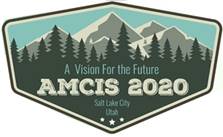Loading...
Paper Type
Complete
Abstract
Modern social media platforms offer myriad benefits to individuals, organizations, and societies; yet, social media also has a potential “dark side”, including, among other elements, the potential negative consequences of social media overuse. We explore whether mere exposure to social media cues can induce subconscious pleasurable reactions, particularly among those who report high levels of social media craving and use. We report the results of an online experiment (n=201) that used the Affect Misattribution Procedure (AMP) to elicit pleasantness ratings of target stimuli associated with social media logos and other types of control and comparison images. Results demonstrate that participants who report high levels of social media craving and use subconsciously attribute greater favorability to target stimuli associated with social media logos vs. (a) non-social media stimuli and (b) low craving/use participants, suggesting a spontaneous hedonic reaction to social media cues that may reinforce overuse behavior.
Recommended Citation
Matthews, Michael; Meservy, Tom; and Fadel, Kelly J., "Exploring Psychological Reactions to Social Media Logos" (2020). AMCIS 2020 Proceedings. 10.
https://aisel.aisnet.org/amcis2020/social_computing/social_computing/10
Exploring Psychological Reactions to Social Media Logos
Modern social media platforms offer myriad benefits to individuals, organizations, and societies; yet, social media also has a potential “dark side”, including, among other elements, the potential negative consequences of social media overuse. We explore whether mere exposure to social media cues can induce subconscious pleasurable reactions, particularly among those who report high levels of social media craving and use. We report the results of an online experiment (n=201) that used the Affect Misattribution Procedure (AMP) to elicit pleasantness ratings of target stimuli associated with social media logos and other types of control and comparison images. Results demonstrate that participants who report high levels of social media craving and use subconsciously attribute greater favorability to target stimuli associated with social media logos vs. (a) non-social media stimuli and (b) low craving/use participants, suggesting a spontaneous hedonic reaction to social media cues that may reinforce overuse behavior.
When commenting on articles, please be friendly, welcoming, respectful and abide by the AIS eLibrary Discussion Thread Code of Conduct posted here.


